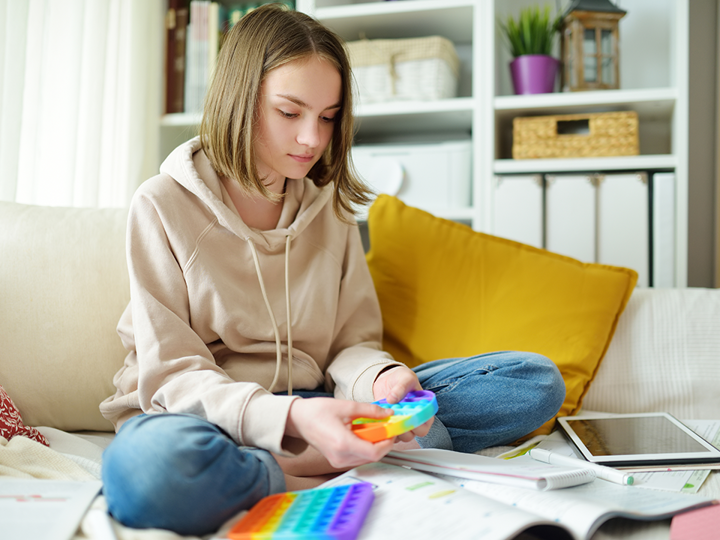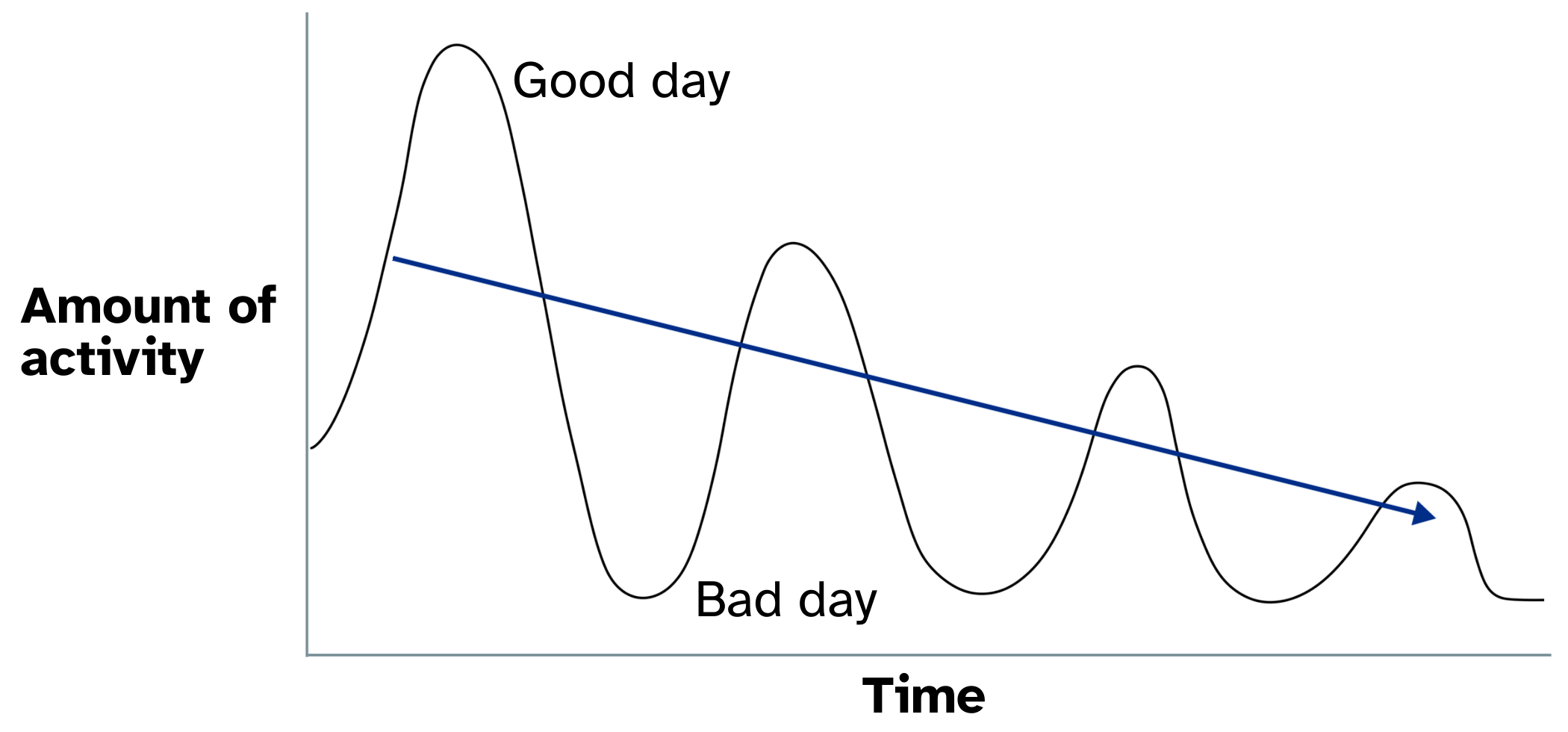Functional Neurological Disorder (FND)

Functional neurological disorder (FND) is when messages to and from the body are not properly sent or received by the brain. It disrupts the normal pathways your brain uses to move, feel, speak and think. This causes lots of different symptoms like tremors, memory problems or temporary paralysis.
FND is a rare disorder. With FND, there is no damage to the structure of your child or young person's brain or body. FND is not caused by brain damage or a nervous system disease. We do not know what causes functional neurological disorder. The condition is not 'fake', 'in their head' or 'behavioural'.
Explore the topics on this page:
About functional neurological disorder (FND)
About functional neurological disorder (FND)
FND can be broken down into 3 parts:
Functional - This is how your body works. It is how the systems in your body work, not the structure of the body.
Neurological - This is anything to do with your nervous system. This includes the nerves and the messages they are sending to the brain.
Disorder - This is when something in the body or brain doesn't work as well as it should.
FND is a rare disorder. We do not know what causes FND and there is currently no cure for FND. Some people will recover from FND but many people with FND will have it for the rest of their life.
Functional neurological symptoms (FNS)
FND has many different symptoms. These are known as functional neurological symptoms (FNS). Your child or young person may have an 'episode'. This is when they experience one or more of their symptoms. It can last anywhere between 5 minutes to 3 hours.
Functional neurological symptoms (FNS) can be split into 3 categories:
- Issues with moving (motor dysfunction)
- Issues with their senses (sensory dysfunction)
- Changes in their mental state (altered awareness)
These symptoms are 'functional' symptoms. This means that there is not an issue with your child's brain or body. The symptoms are caused by issues with the messages your child or young person's brain is sending and receiving.
Functional neurological symptoms include:
- Weakness in their arms or legs (functional limb weakness). Your child or young person may drop things, have issues walking or feel like their arm or leg isn't part of them.
- Not able to move their arms or legs (functional paralysis of limbs).
- Differences with speech. This can be talking in a whisper (dysphoria), slurred speech or stuttering.
- Feeling tingling, numbness or pain in their face, torso, arms or legs. This often occurs on 1 side of the body.
- Non-epileptic seizures. These are also known as dissociative or functional seizures.
- Blacking out or fainting.
The symptoms are not 'fake', 'all in their head' or 'behavioural'. What your child or young person is experiencing is real. The symptoms can have a big impact on your child or young persons mental health and wellbeing.

It is very common for children and young people with FND to have other conditions alongside their FND. These may be referred to as side effects, co-conditions or comorbidities.
These co-conditions include:
- Anxiety
- Bowel and bladder problems
- Chronic pain
- Depression
- Memory problems
- Sleep problems
Treating FND
With FND, the main goal of treatment is to manage the symptoms and what triggers the symptoms.
It is important for your child or young people to pay attention to their body.
Boom and bust cycles
Your child or young person with FND can enter a 'boom and bust' activity cycle. This is when they do a lot on one day, but then need to rest the next day.
Even activities like reading or watching TV can be tiring as they need mental energy and concentration.
If this cycle continues, your child or young person's energy will decrease over time. This will mean they will be able to do fewer activities.

Finding a baseline
A baseline is the lowest level of activity that your child or young person can do every day, including the bad days. Baseline activities may include:
- getting up
- getting dressed
- attending school for a one hour lesson
It's okay for your child or young person's baseline to be low at the start. Try to encourage your child or young person to practice their baseline activities everyday. Over time they will slowly be able to do more.
Helping with activity management
Some tips you can use with your child or young person to help them manage their activity levels.
- Establish a routine
- Record their activity until they are completely aware of what they can do as a baseline
- Encourage them to keep their activity levels consistent each day
- Don't push them to do more on a good day
- Encourage them to practice every day to avoid the boom and bust cycle
- Encourage them to do something they enjoy every day
With time your child or young person may slowly progress from their baseline and may be able to do more.
How we can help
Our Occupational Therapy (OT) team will help your child or young person. Our approach will be tailored to your child or young person's needs.
We will help your child or young person:
- take part in everyday activities and routines that are important to them
- adapt to the changes in their abilities due to FND
- to be independent
- find new ways to do activities they find hard
- find equipment that can help them complete activities
- learn to manage their symptoms like fatigue
- access their education
We will assess your child or young person's ability to do daily activities. This includes activities like getting dressed, using cutlery, writing and going to school. These skills are also known as functional skills.
As part of our assessment, we may ask you to monitor your child or young person over 24 hrs. The information from this will help to inform the advice we provide. It will help us to understand your child or young person's symptoms, how long the symptoms last and what triggers them.
Once your child or young person has been assessed, we will provide you with techniques to help your child or young person manage their FND.
We can also provide training and support for your child or young person's school. It is important to us that your child or young person doesn't miss out on learning and school.
Helpful FND resources
FND Hope is a charity for people with FND. They have created a variety of resources for children and young people. You and your child or young person may find these helpful.
Last reviewed: 14 April, 2025





